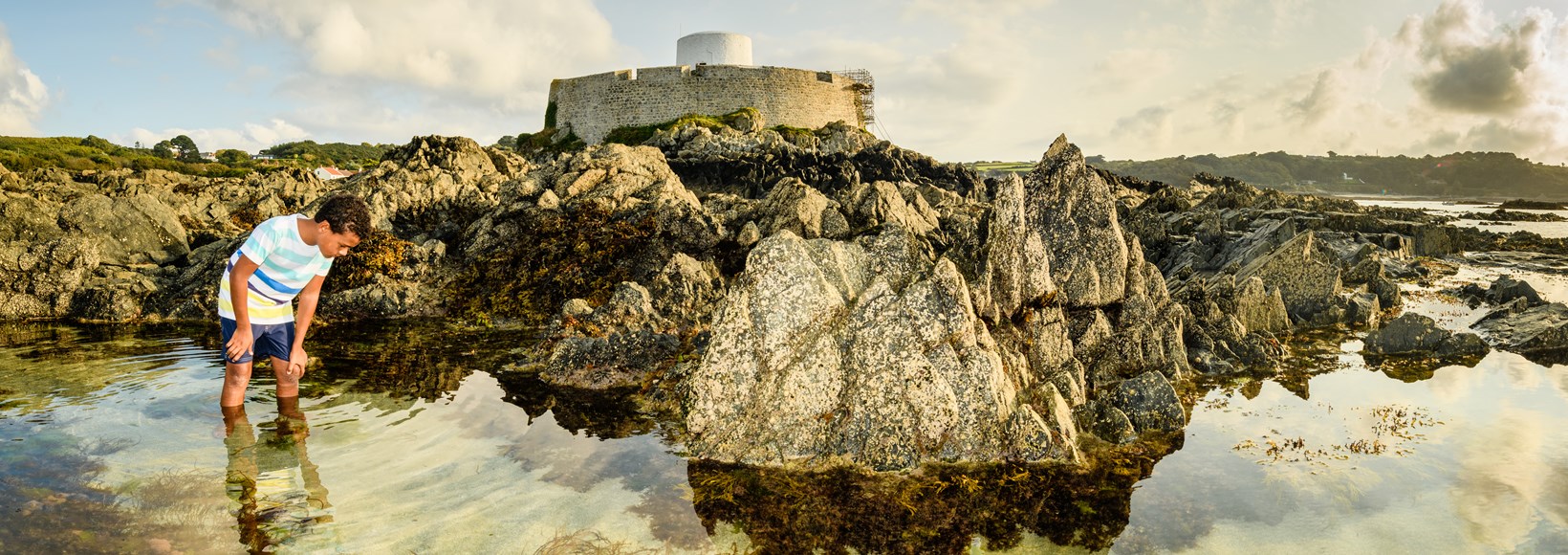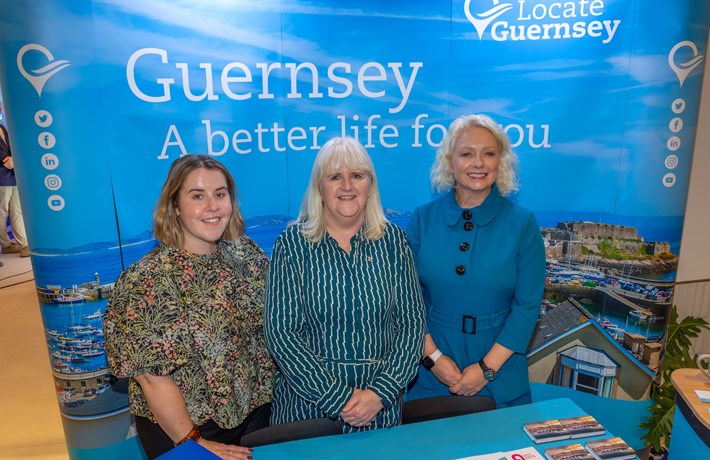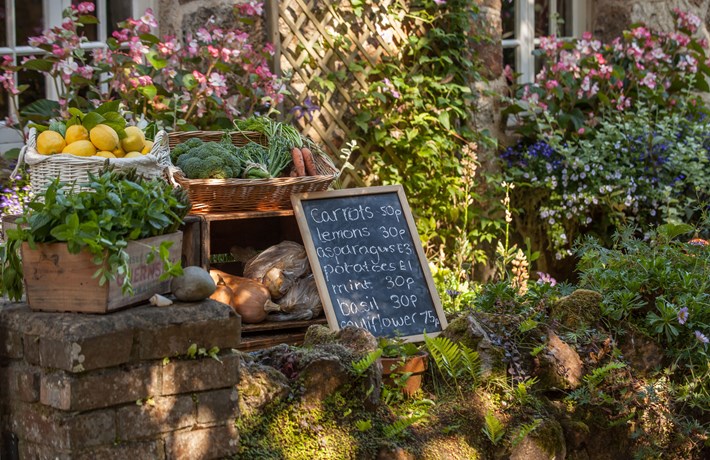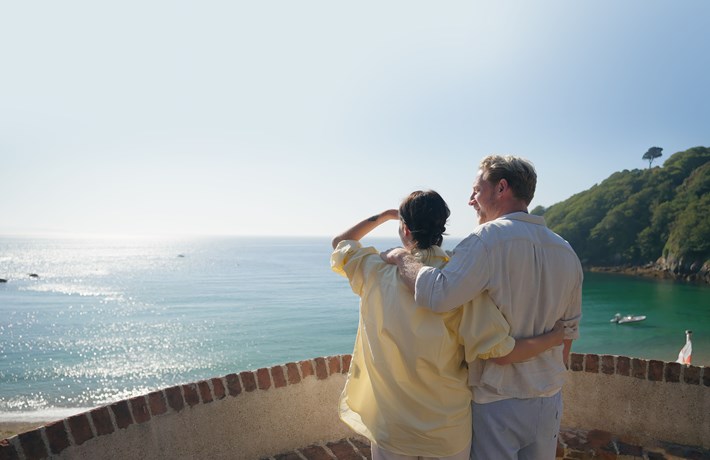Rock pooling in Guernsey

Liz Sweet Manager at the Guernsey Biological Records Centre, shares her top 5 creatures to spot when rock pooling in Guernsey.
How to Explore Rock Pools:
- Watch the tide - The best time to explore rock pools is during low tide when the water level is lowest. Check tide times before you head out so you don't miss the adventure.
- Watch your step - Rocks can be slippery, so wear appropriate footwear with a good grip, like water shoes or sandals.
- Be gentle - Remember, rock pools are delicate habitats, so handle the creatures with care and return them gently to their homes after observing them.
- Take a net or a clear container - A net or clear container can help you get a closer look at the tiny creatures without disturbing them too much.
- Bring a magnifying glass - Some creatures are small and might be hard to see with the naked eye. A magnifying glass can turn your exploration into a fascinating up-close encounter.
- Observe from a distance - Just remember anemones are beautiful to look at, but they can sting you, so keep a respectful distance. Admire them without touching or disturbing them.
- Respect the environment - Leave the rock pools as you found them, without taking anything home except wonderful memories and maybe a few pictures.
These little pockets of the ocean are filled with fascinating creatures waiting to be discovered. Here's a fun and easy guide to help you identify my top 5 coolest residents:
1. Pipefish: The Pregnant Dads
Look for an elongated fish with a skinny, straw-like snout. Pipefish come in various colours, and some even have cool patterns to blend in with the rocks and seaweed. In fact, I’ve often picked one up thinking it was seaweed until it wiggles.

If you’re very lucky you might find a male with rows of little beads on their tummies; they're the pregnant ones! Pipefish are close relatives of seahorses and just like seahorses it’s the boys who care for and carry the eggs until they hatch. Talk about being a super dad!

2. Star Ascidians: The Cosmic Blobs
Ascide-what? They might look like a garden of little flowers, or stars from another galaxy, but they’re actually tiny sea squirts and they live very close together in a colony. Each star shape is made up for 3-12 individual animals and they come in a huge variety of different colours, I’ve seen yellow, orange, even violet and green ones! Star ascidians attach themselves to rocks, so you can often find them nestled among seaweed or clinging to stones.

3. Rainbow Wrack Seaweed: Nature's Kaleidoscope
No rockpool is complete without seaweeds for animals to eat. Guernsey has an astonishing number of seaweed species… more than 200! One of my favourites is Rainbow Wrack which shimmers in the light, run your hand through it and see how the colours change creating a mesmerizing kaleidoscope effect underwater. Sometimes, you might find tiny air bladders that help the seaweed float when submerged. Look for vibrant green, red, and even purple fronds, while at dawn they even look neon blue.


4. Marine Chitons: Ancient Living Fossils
Guernsey has the wrong rock for fossils, but this doesn’t matter because we have marine chitons. As their body design has not changed significantly for more than 300 million years we call them "living fossils". They have been around for an astonishing 500 million years, making them older than dinosaurs!
They have 8 articulated shell plates on their upper or dorsal body surface, so chitons look like they’re wearing a segmented suit of armour, providing them with excellent protection against predators. I swear it’s impossible to see them move, they look like they are stuck on the rock. Turn away and they change position!

5. Territorial Snakelocks Anemones: Neon Magic Under UV Light
We expect anemones on rocks, but Snakelocks Anemones turn up in some weird places like seaweed or even the sand! They use their long snakelike tentacles to great advantage when they fight over territory. Their long tentacles even inspired the name Snakelocks Anemone as they move like Medusa’s snake hair in the water.
That’s not all, there’s a special surprise waiting for you to discover. Under ultraviolet (UV) light, these beautiful animals fluoresce - glowing bright green like an alien right below our feet!

With this guide, you're ready to embark on an exciting journey through Guernsey's rock pools. Keep your eyes peeled for these weird and wonderful creatures, and who knows what else you might find. Happy exploring!
If you are considering relocating to the island, the team at Locate Guernsey are on hand to provide confidential guidance throughout your relocation journey free of charge. If you would like to understand how Guernsey could work for you, please get in touch:
© All photo credits - Liz Sweet, The Guernsey Scientist





